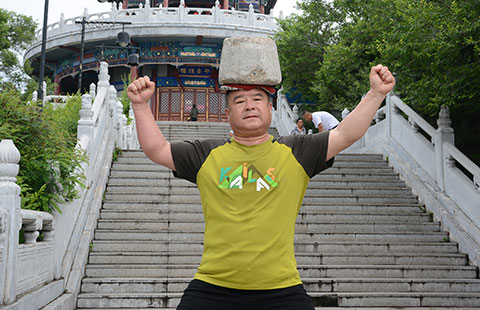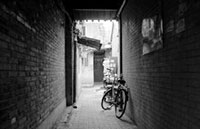Reviving the cultural power of China's museums
(Xinhua) Updated: 2012-11-23 15:08BEIJING - China has long been known for the sheer number of its historical relics. Now, however, from the globally renowned Beijing Palace Museum and the privately owned China Red Sandalwood Museum in Beijing to the unique China Paper-cut Museum in Shaanxi, the quality of the institutions housing this treasure is also being recognized.
Museums are powerful guardians and showcases of cultural identity. As crowds are wowed by the Shanghai Biennial's hosting in an acclaimed new art gallery in the city, experts have told Xinhua how Chinese museums are entering a fresh era.
Quality-focused state-run museums
Gone are the days when the only notable Chinese attraction frequented by foreign visitors was Beijing's Forbidden City, officially known as the Palace Museum.
Around 100 new museums are now opening each year in China. Official statistics show that the number of museums registered in the country increased from 2,200 to 3,589 in the 10 years up to the end of 2011. It means that there is now one museum for every 400,000 Chinese people. And it is predicted that there will be one for every 250,000 Chinese by 2020.
"The development has entered the fast lane," says Song Xinchao, deputy director of the State Administration of Cultural Heritage. "But at the same time, we have also reached a transitional period, that is, from quantity-oriented to quality-focused."
Among those quality museums, Shanghai's new contemporary art gallery, known as the Power Station of Art, or PSA, has been a must-see since it opened on October 1, 2012.
A redevelopment of a former power plant built in 1897, it has retained the building's 165-meter-tall chimney, and expanded the interior to more than 41,000 square meters. Its 12 exhibition halls of Chinese artworks from the 1980s earn it the status of China's first state-run contemporary art gallery.
Home to the ninth Shanghai Biennial which runs until March 31, 2013, the PSA hosts exhibitions ranging from a review of the past 30 years of Chinese contemporary art to works from the Pompidou Center in Paris, giving audiences a feast of world art and a mixture of different cultures.
In addition, the PSA also promotes art education and international art cooperation. Visitors can participate in art-related lectures, and interact with artists in the museum cafe to further appreciate the displays and learn more about the stories behind the exhibitions.
"We have deliberately blurred the definition of public space and exhibition space. Even the chimneys are now public spaces, and many people will have the chance to interact with the artwork in the open exhibition hall," says the PSA's designer, Dr. Zhang Ming.
Thanks to these visitor-friendly designs and free access to more than 1,800 museums nationwide, a total of 400 million tourists are attracted to China's museums annually, a 60 percent rise from 2007, according to latest official figures in 2012.
Important role of private museums
China has witnessed a rapid increase in the number of private museums and galleries over the past five years. The country's 456 private museums, 13 percent of the nation's total, play an important role in protecting and promoting Chinese culture.
Beijing's China Red Sandalwood Museum is an outstanding example of private investment in culture. Founded in 1999 by Chen Lihua, chairwoman of Fuwah International Group, it is China's first and largest museum dedicated to collecting, researching and displaying red sandalwood works of art and classical furniture.
Located in Beijing's Chaoyang District and with an area of 5,000 square meters, the royal palace-style architecture of the Red Sandalwood Museum itself is a work of art. The museum has some 200 pieces of original Ming and Qing-Dynasty antique furniture collected by Chen, and hundreds of red sandalwood pieces including a miniature of the famous Temple of Heaven made by artisans under her supervision.
"The motivation for me to establish the museum is not only because of my interest in Chinese classical furniture, but also the responsibility to protect and promote traditional Chinese red sandalwood art, which is heritage left to us by our ancestors," explains Chen, who was on Forbes Magazine's annual list of the world's 100 most powerful women in 2012.
She tells Xinhua that red sandalwood is one of the most precious timbers on earth, grows very slowly and is often hollow when mature. "Hence the saying that 'it grows an inch a century and an inch has the value of pure gold of similar size,'" she adds.
Chen not only shares her collection with the public in the museum but has donated items to the Smithsonian Institution in the United States, Dresden State Art Collections in Germany and the Domaine National de Chambord in France to let world audiences appreciate Chinese royal wood carving and Chinese culture at large.
"I was very impressed with all the red sandalwood artworks across four stories here. And only here can you take a close look at this classical furniture and feel so proud to be a Chinese with such rich culture and long history," a visitor named An Yongqing tells Xinhua. He paid 20 yuan($3.2)) for a senior's ticket.
But not all private museums in China are so successful or enjoy such popularity. A shortage of professionals and lack of funds remain obstacles for the development of many. Since 2011, state-owned museums in Sichuan, Shanxi and Shaanxi provinces have paired up with local private museums as a trial project to help them upgrade exhibition quality and services while giving subsidies to support the development of the private attractions.
"The trial has been very effective, and we will expand to more provinces in the future. Museums, either state-run or privately owned, are very useful means to protect Chinese culture as well as passing it on to the next generation," according to Song Xinchao.
- What you need to know about Jiangsu's deadly tornado
- China faces challenges in tornado forecast: weather authority
- Ruling may 'open Pandora's box'
- Poverty funds facing stiffer supervision
- Guns a growing factor in narcotics enforcement
- China issues disaster alerts
- Ministry orders removal of substandard running tracks
- HK most expensive for expats
- Agency lists tiny hallway for sale: 1.5 million yuan
- Li vows to boost support for real economy










